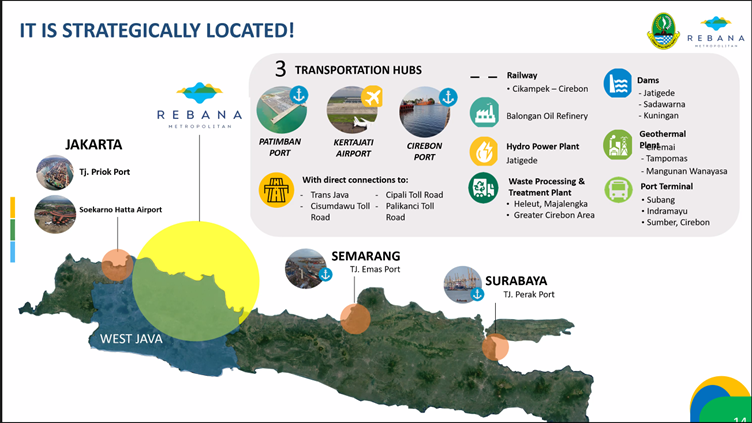West Java International Airport (BIJB) Kertajati in Majalengka officially replaced the role of Husein Sastranegara Airport in Bandung starting at the end of last October. All flights in Husein were moved to Kertajati.
This transfer is believed to accelerate the development of the Greater Cirebon Metropolitan Area or Rebana, which stretches from Subang to Cirebon. This hope arose from the Chief Executive of the Rebana Area Management Agency, Ir. Bernardus Djonoputro, M.M., IAP, while giving a guest lecture for the Business Leadership Executive class of the MBA ITB, Jakarta Campus on Friday (3/11).

The Rebana Metropolitan Area consists of 7 districts/cities, namely Subang Regency, Sumedang Regency, Indramayu Regency, Majalengka Regency, Cirebon Regency, as well as the supporting areas of Cirebon City and Kuningan Regency. The population reaches 10 million people.
This area is included in a national strategic project worth IDR 234.596 trillion, equivalent to USD 17 billion. This includes 81 infrastructure projects for roads, ports, airports, dams, transportation, and water resources with two planning patterns: liveable cities and sustainable growth centers.
Bernadus Djonoputro shared his experiences as the project leader, focusing on strategies to prevent overlapping authority with local government involvement.
Bernadus emphasized the importance of clearly defining duties and authorities among various agencies. The local government, acting as both an instrument and implementer, works alongside the facilitating body responsible for engaging with the government and the local community.
These principles align with the three objectives of the Rebana Metropolitan Area Management Agency. Firstly, it aims to facilitate and provide services in investment, spatial planning, and infrastructure within the region. Secondly, it strives to contribute to economic and regional development. Lastly, it focuses on optimizing management and fostering synergy among roles in services that span administrative, functional, and impactful boundaries.
Drawing from this experience, Bernardus concluded that effective leadership necessitates a clear vision supported by a well-defined distribution of responsibilities and authorities among agencies, institutions, and departments, all guided by a coherent planning framework.





